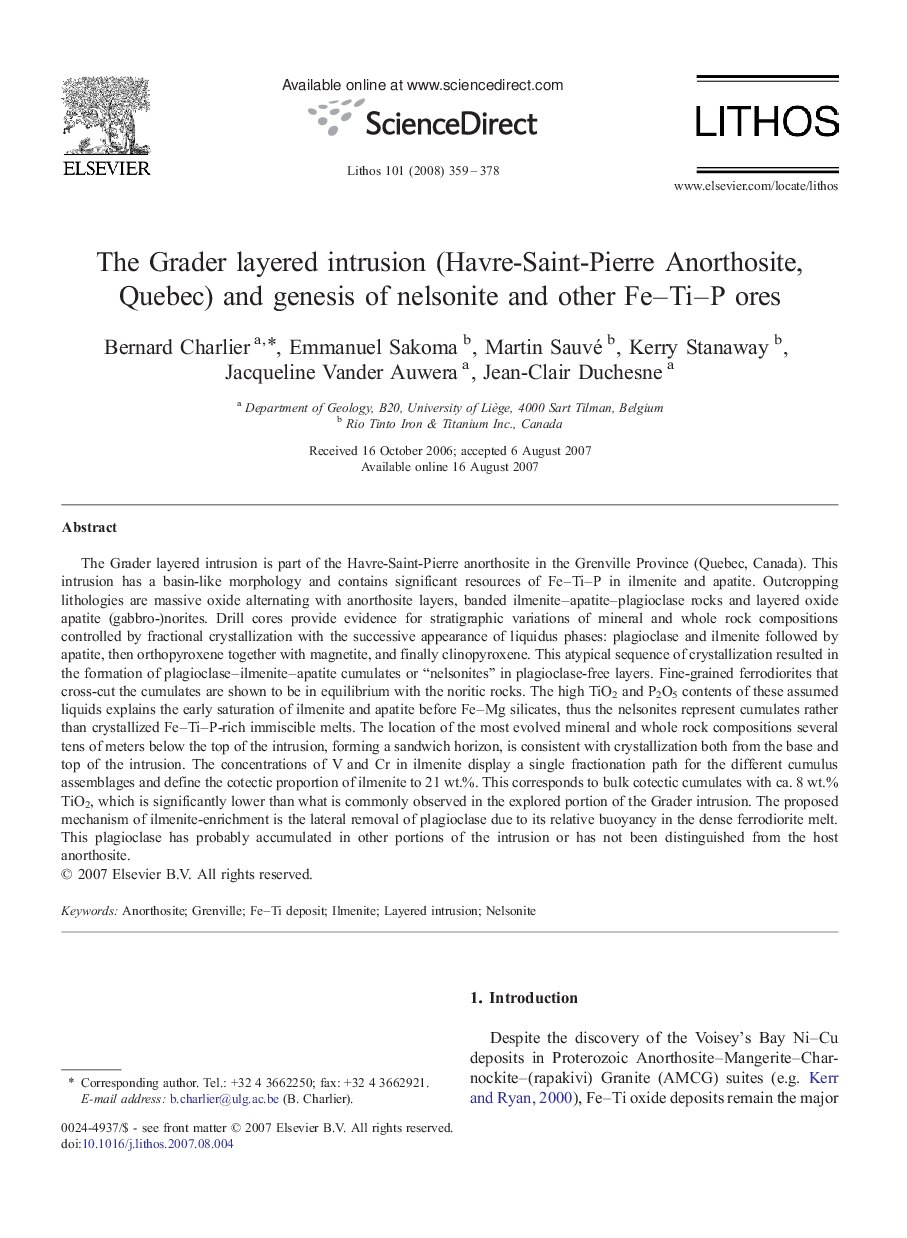| Article ID | Journal | Published Year | Pages | File Type |
|---|---|---|---|---|
| 4717634 | Lithos | 2008 | 20 Pages |
The Grader layered intrusion is part of the Havre-Saint-Pierre anorthosite in the Grenville Province (Quebec, Canada). This intrusion has a basin-like morphology and contains significant resources of Fe–Ti–P in ilmenite and apatite. Outcropping lithologies are massive oxide alternating with anorthosite layers, banded ilmenite–apatite–plagioclase rocks and layered oxide apatite (gabbro-)norites. Drill cores provide evidence for stratigraphic variations of mineral and whole rock compositions controlled by fractional crystallization with the successive appearance of liquidus phases: plagioclase and ilmenite followed by apatite, then orthopyroxene together with magnetite, and finally clinopyroxene. This atypical sequence of crystallization resulted in the formation of plagioclase–ilmenite–apatite cumulates or “nelsonites” in plagioclase-free layers. Fine-grained ferrodiorites that cross-cut the cumulates are shown to be in equilibrium with the noritic rocks. The high TiO2 and P2O5 contents of these assumed liquids explains the early saturation of ilmenite and apatite before Fe–Mg silicates, thus the nelsonites represent cumulates rather than crystallized Fe–Ti–P-rich immiscible melts. The location of the most evolved mineral and whole rock compositions several tens of meters below the top of the intrusion, forming a sandwich horizon, is consistent with crystallization both from the base and top of the intrusion. The concentrations of V and Cr in ilmenite display a single fractionation path for the different cumulus assemblages and define the cotectic proportion of ilmenite to 21 wt.%. This corresponds to bulk cotectic cumulates with ca. 8 wt.% TiO2, which is significantly lower than what is commonly observed in the explored portion of the Grader intrusion. The proposed mechanism of ilmenite-enrichment is the lateral removal of plagioclase due to its relative buoyancy in the dense ferrodiorite melt. This plagioclase has probably accumulated in other portions of the intrusion or has not been distinguished from the host anorthosite.
